A Guide to Functional Requirements (with Examples)
Learn how to define requirements and keep all stakeholders aligned.
Getting the requirements right is the key to the success of any project. Failure to accurately define and document them inevitably results in miscommunication between stakeholders, constant revisions, and unnecessary delays. Studies show that unclear or poorly documented requirements can increase the project timeline and budget by up to 60%.
With the growing popularity of the Agile approach to documentation, some teams have started to neglect documenting requirements – after all, it's "working software over comprehensive documentation", right?
Alas, it's a common misconception, and foregoing proper internal documentation can be particularly damaging when it comes to requirements. In this article, we'll dive deeper into what functional requirements are and why it's vital to document them.
- What are functional requirements?
- Why functional requirements need to be documented
- Functional requirements examples
- Functional vs. non-functional requirements
- How to write a functional requirements document
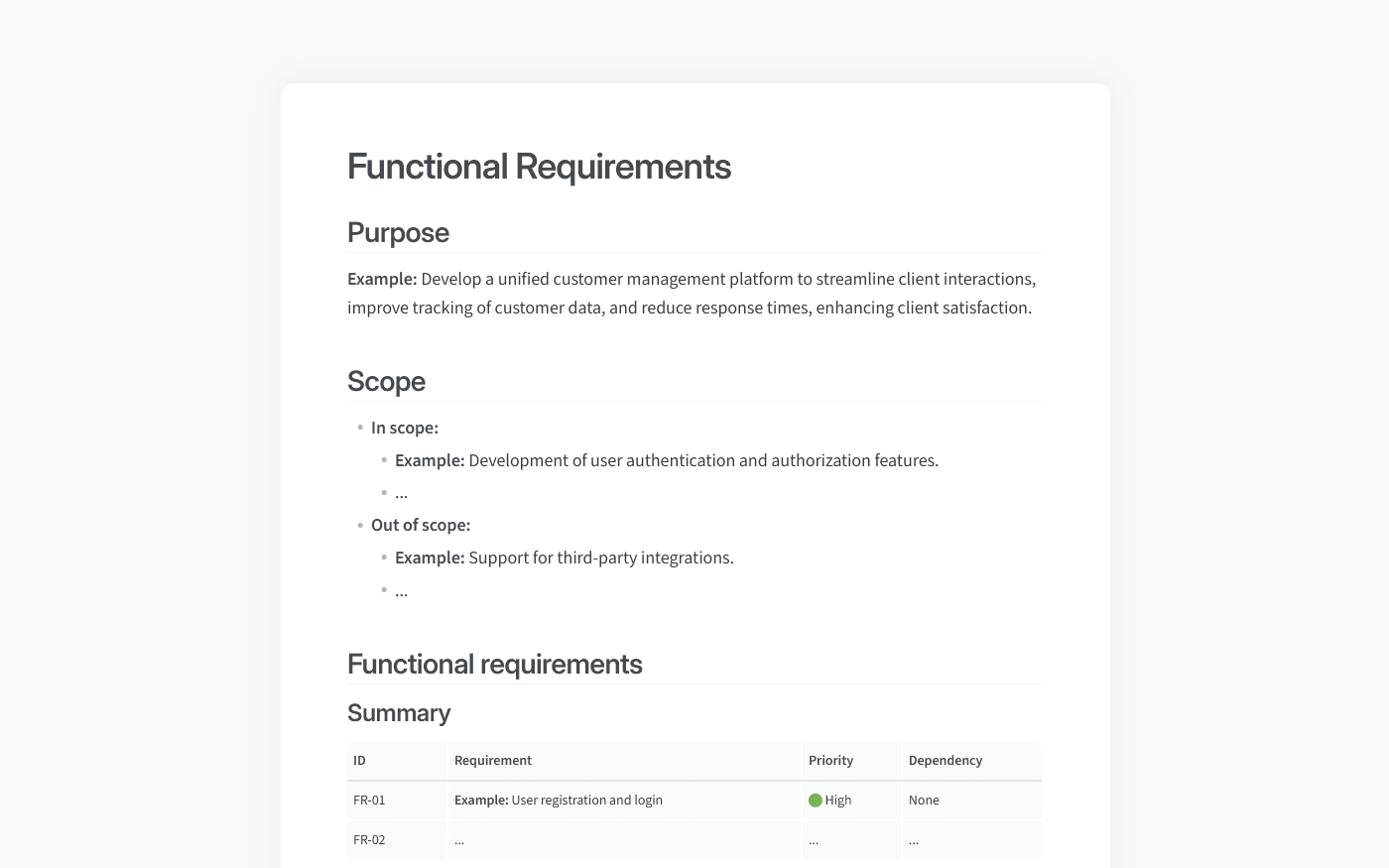
What are functional requirements?
Functional requirements are product features that developers must implement to enable the users to achieve their goals. They define the basic system behavior under specific conditions.
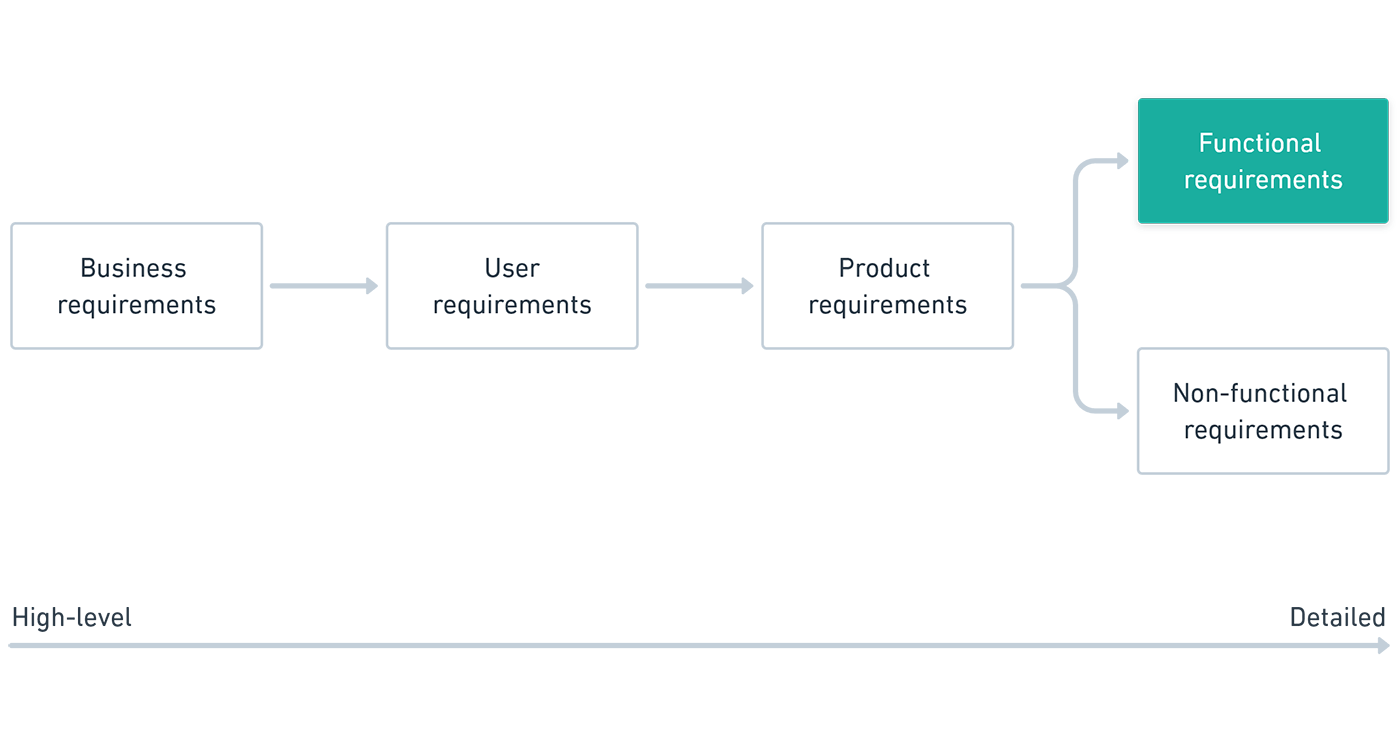
Functional requirements should not be confused with other types of requirements in product management:
Business requirements describe the high-level business needs, such as carving a market share, reducing customer churn, or improving the customers' lifetime value.
User requirements cover the different goals your users can achieve using the product and are commonly documented in the form of user stories, use cases, and scenarios.
Product requirements describe how the system needs to operate to meet the business and user requirements. They include functional requirements and non-functional requirements.
Functional requirements may be captured as part of a product requirements document (PRD) or in the form of a separate functional requirements document (FRD). Here's an example of what such a document may look like in Nuclino, a unified workspace for all your team's knowledge, docs, and projects – create an account and start documenting your requirements in one central place:
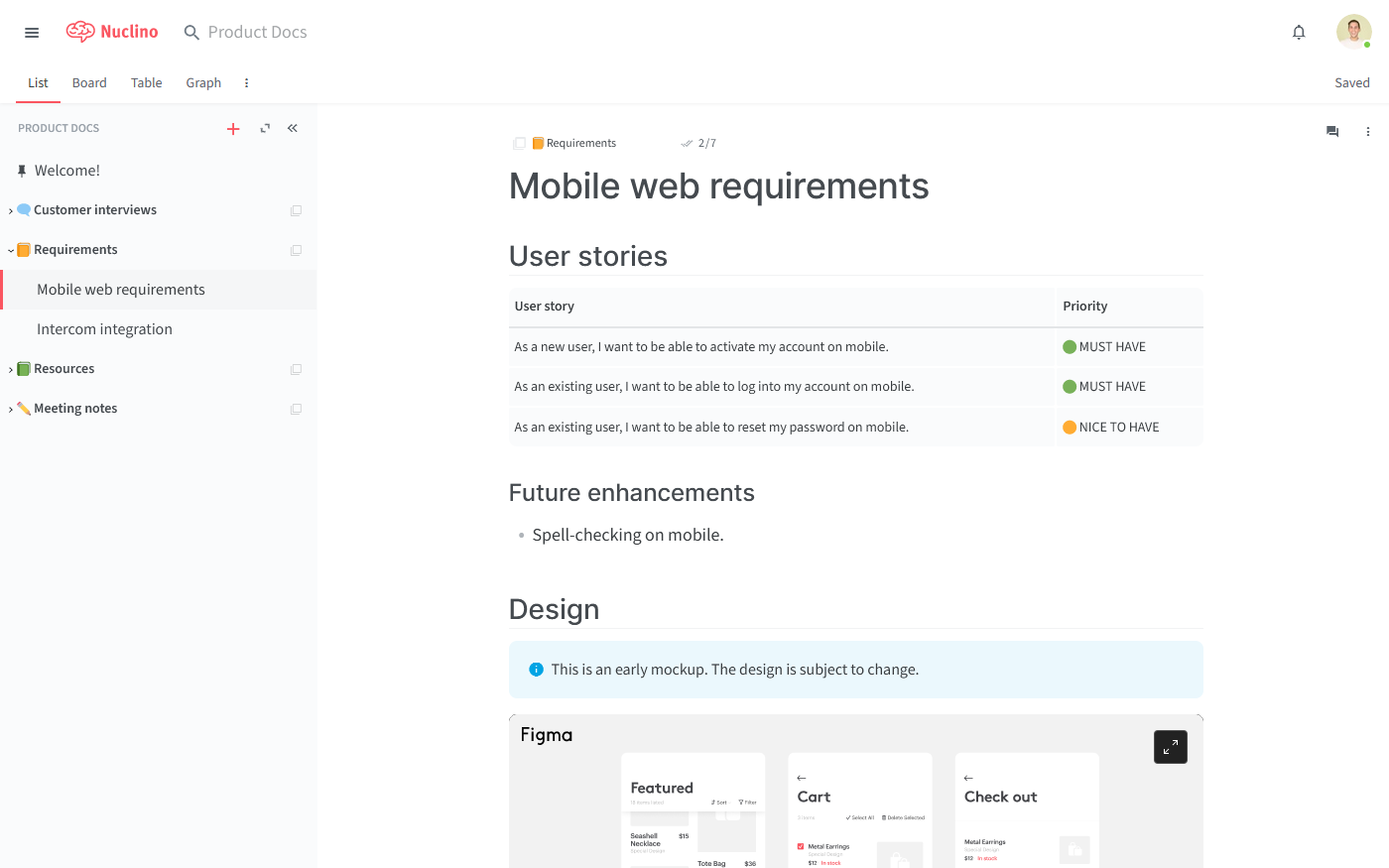
Why functional requirements need to be documented
Documenting and aligning on functional requirements has numerous benefits:
The stakeholders have a single source of truth. Clearly documented requirements keep all developers, designers, and QA testers on the same page and working towards the same goal, avoiding misunderstandings.
Less time is spent in meetings. When the team has a shared understanding and a written record, there is no need for regular meetings. Instead, stakeholders can rely more on asynchronous communication to stay aligned.
Projects become more predictable. Detailed, high-quality requirements allow the team to estimate the development time and cost more accurately and develop a product that meets the expectations.
Problems can be identified sooner. Thoroughly capturing functional requirements during the discovery phase helps identify errors early on and correct them, saving time and resources.
If your company specializes in developing custom software solutions, such as third-party API integrations or complex data management systems, the meticulous documentation of functional requirements becomes even more critical. Clear documentation ensures that the tailored solutions you deliver align precisely with your clients' unique needs.
Functional requirements examples
Functional requirements need to be clear, simple, and unambiguous. Here are some examples of well-written functional requirements:
The system must send a confirmation email whenever an order is placed.
The system must allow blog visitors to sign up for the newsletter by leaving their email.
The system must allow users to verify their accounts using their phone number.
Contrary to a popular misconception, functional requirements are not analogous to user stories, but stories can be a useful tool for deriving requirements with the user in mind. For example:
User story: As an existing user, I want to be able to log into my account.
Functional requirements:
The system must allow users to log into their account by entering their email and password.
The system must allow users to log in with their Google accounts.
The system must allow users to reset their password by clicking on "I forgot my password" and receiving a link to their verified email address.
Functional vs. non-functional requirements
When capturing product requirements, it's important to distinguish between functional and non-functional requirements.
To put it simply, functional requirements describe what the product should do, while non-functional requirements place constraints on how the product should do it. They can be expressed in the following form:
Functional requirement: "The system must do [requirement]."
Non-functional requirement: "The system shall be [requirement]."
Functional requirements – as the name implies – refer to specific product functionality. Defining, measuring, and testing them is usually a straightforward task.
On the other hand, non-functional requirements (also known as "quality requirements" or "quality attributes") are more abstract. They impose constraints on the implementation of the functional requirements in terms of performance, security, reliability, scalability, portability, and so on.
NFRs are not themselves backlog items, but they are just as important since they ensure the usability and effectiveness of the entire software system. A transaction that takes 20 seconds to successfully complete may be functional – but it's certainly not usable.
Every functional requirement typically has a set of related non-functional requirements, for example:
Functional requirement: "The system must allow the user to submit feedback through a contact form in the app."
Non-functional requirement: "When the submit button is pressed, the confirmation screen must load within 2 seconds."
How to write a functional requirements document
There is no universally accepted functional requirements document template, and it's up to you and your team which style and format to follow. However, there are several best practices that apply in most cases.
Select the right documentation tool
In the past, most teams used Microsoft Word to create and manage functional requirements. This inevitably led to out-of-date, inaccurate FRDs bouncing around the team's inboxes.
Fortunately, now you have more options to choose from. Select a tool that facilitates collaboration and ensures that everyone always has the latest version to avoid confusion. For example, you could store your requirements in a Google Doc, or better, in your team's documentation tool or internal wiki, which can be easily set up in Nuclino.
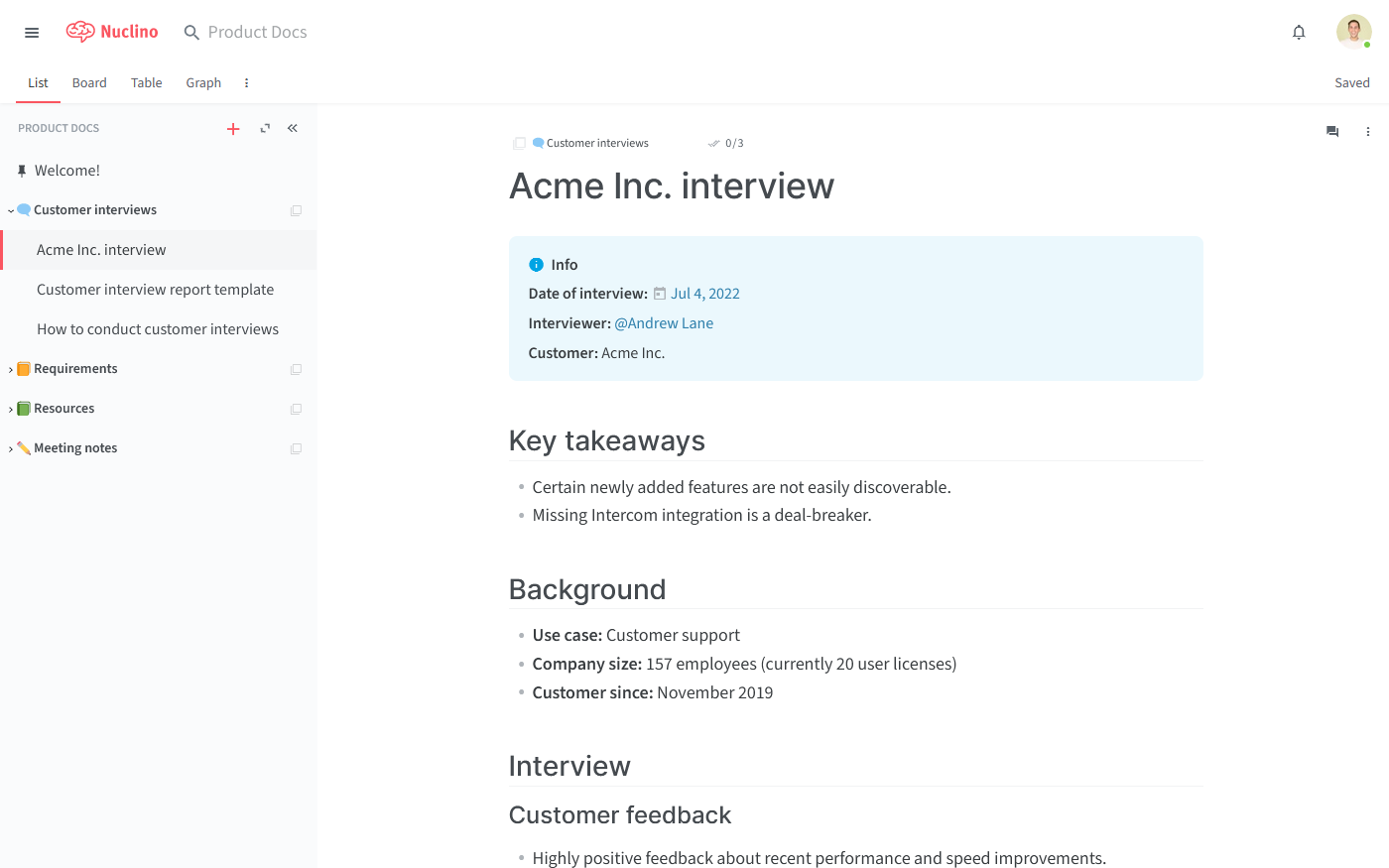
While Nuclino can be used exclusively as a documentation tool, it's highly versatile and capable of much more. It offers a variety of ways to structure and visualize your content, including a nested list, a Kanban board, a table, and a mindmap-style graph. This makes Nuclino a great solution for many additional use cases, including project collaboration, sprint planning, asynchronous communication, and more. Nuclino works like a collective brain, allowing you to bring all your team's work together and collaborate without the chaos of files and folders, context switching, or silos.
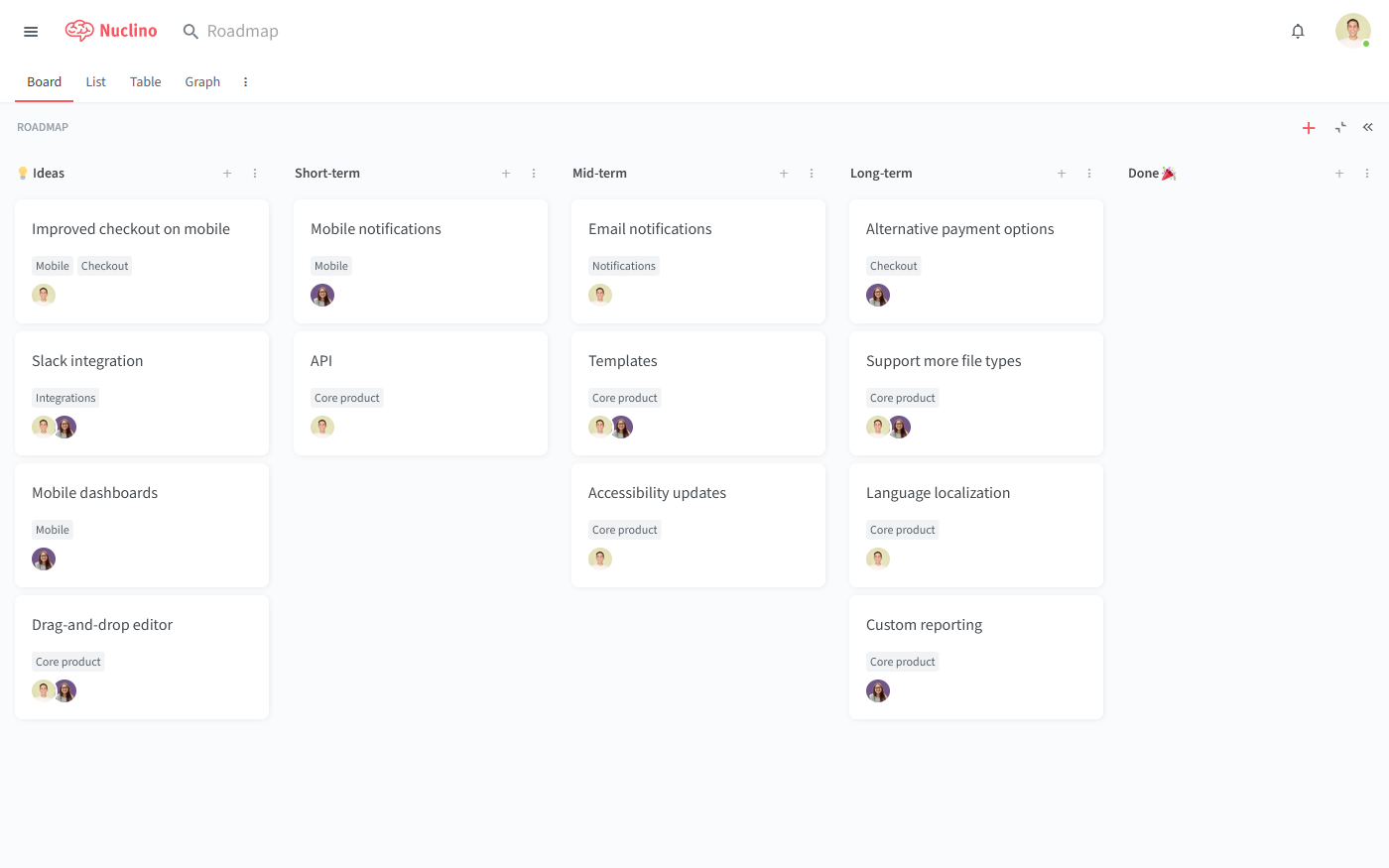
Visual collaboration is also seamlessly built into Nuclino. You can add an infinite collaborative canvas anywhere and use it to create diagrams and whiteboards without having to switch tools.
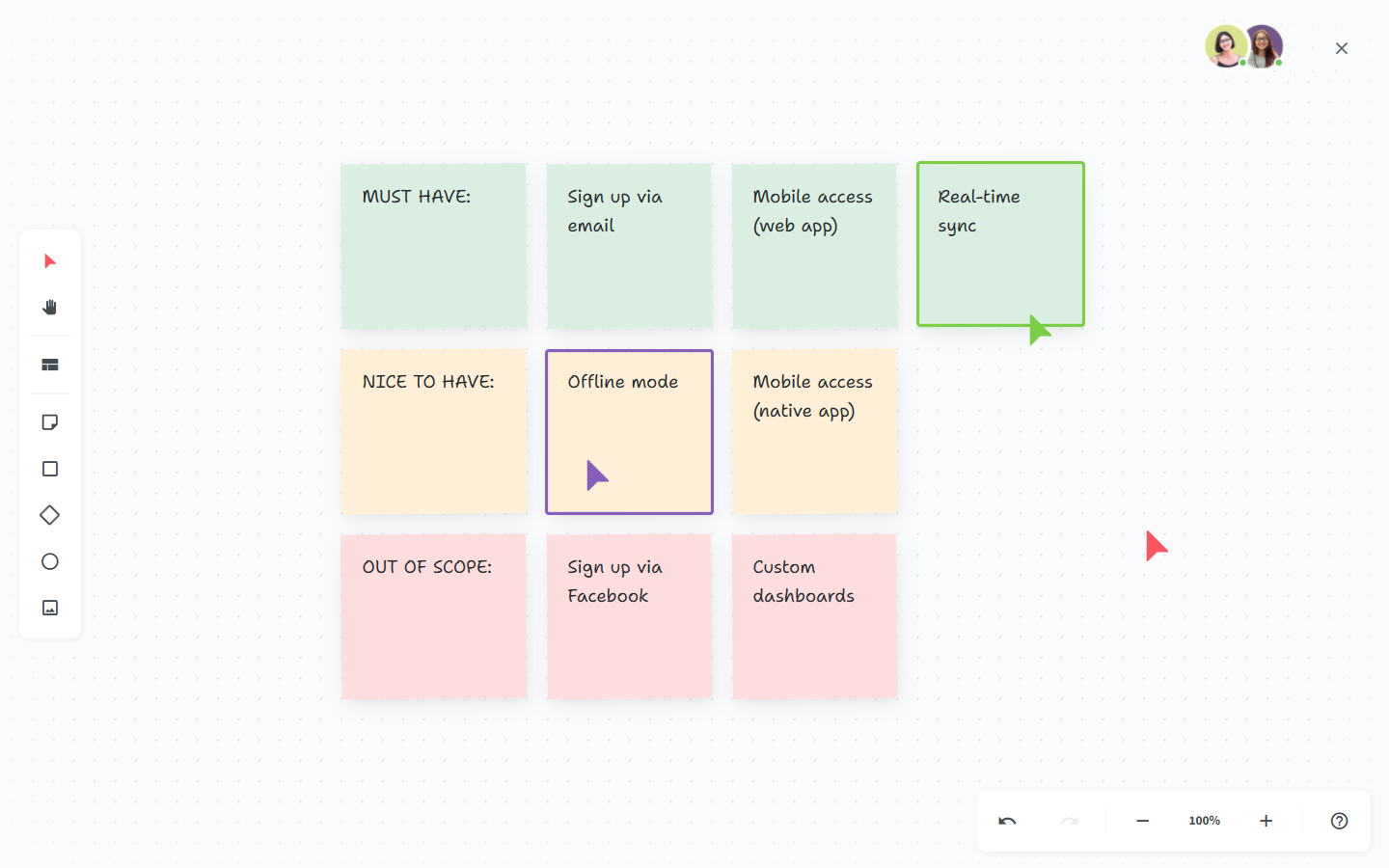
Make it a collaborative process
Your FRD needs to be a living document, evolving as your project progresses. To ensure that everyone stays on the same page, every stakeholder needs to continuously contribute. Involve your team early on and collaboratively keep the requirements up-to-date.
Be as clear as possible
Well-written functional requirements typically have the following characteristics:
Necessary. Although functional requirements may have different priority, every one of them needs to relate to a particular business goal or user requirement.
Concise. Use simple and easy-to-understand language without any unnecessary jargon to prevent confusion or misinterpretations.
Attainable. All requirements you include need to be realistic within the time and budget constraints set in the business requirements document.
Granular. Do not try to combine many requirements within one. The more precise and granular your requirements are, the easier it is to manage them.
Consistent. Make sure the requirements do not contradict each other and use consistent terminology.
Verifiable. It should be possible to determine whether the requirement has been met at the end of the project.
Unclear or confusing requirements can create as many problems as undocumented ones. The scope of the project becomes fuzzy, leading to missed deadlines, unforeseen costs, and wasted effort. Making sure the requirements are documented in a way that leaves no room for interpretation can help you avoid these and many other issues down the road.
Nuclino: Your team's collective brain
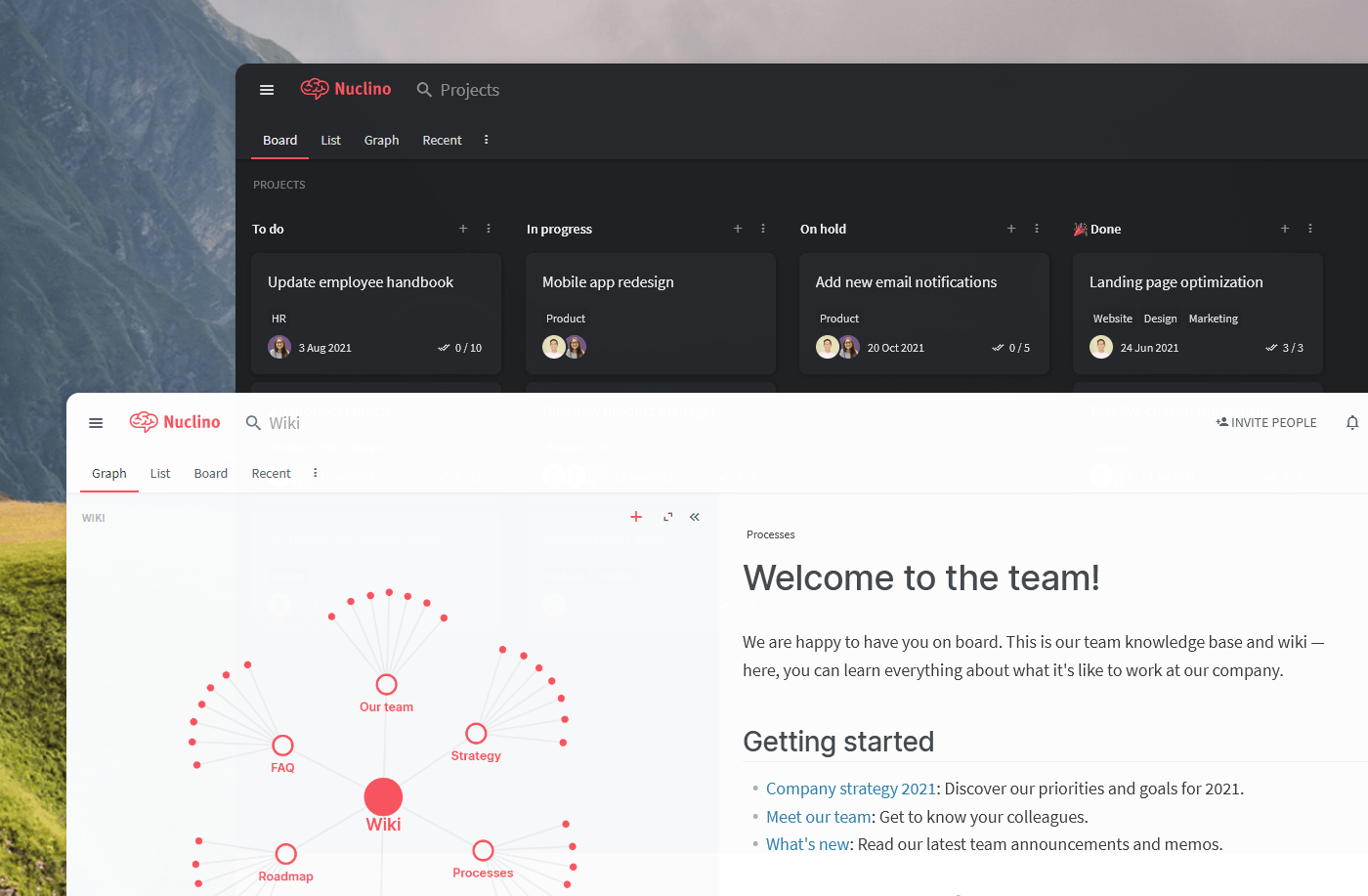
Nuclino brings all your team's knowledge, docs, and projects together in one place. It's a modern, simple, and blazingly fast way to collaborate, without the chaos of files and folders, context switching, or silos.
Create a central knowledge base and give your team a single source of truth.
Collaborate in real time or asynchronously and spend less time in meetings.
Manage and document your projects in one place without losing context.
Organize, sort, and filter all kinds of data with ease.
Integrate the tools you love, like Slack, Google Drive, Figma, Lucidchart, and more.
Ready to get started?
